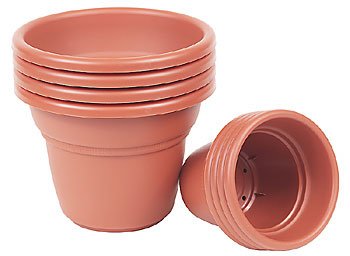When last we left you in the world of organic solutions last
week, I promised to tell you about a cheap alternative to expensive
garden fertilizers.
When last we left you in the world of organic solutions last week, I promised to tell you about a cheap alternative to expensive garden fertilizers. We’re talking about plain old Epsom salts! While you may have heard somewhere along the line that Epsom salts can be used as a fertilizer, you may not know how to use it and why it’s so good. Here’s the scoop.
Chemically, Epsom salts is made up of hydrated magnesium sulphate, which is about 10 percent magnesium and 13 percent sulphur. You probably know that both magnesium and sulphur are key elements in plant growth. These elements aid everything from leaf color and seed germination to the production of fruits and flowers.
Organic gardeners can solve magnesium deficiencies by applying dolomitic lime to raise the soil’s pH. However, this product breaks down slowly and the calcium can interfere with magnesium uptake. Epsom salts is a cheap alternative to organic fertilizers like dolomitic lime.
You can apply Epsom salts in two ways: use as a foliar spray or simply sprinkle dry at the base of plants and trees. Everything from roses to established shrubs, vines and trees will benefit from a couple handfuls of the white crystals. To use as a foliar spray, dilute one tablespoon of Epsom salts into a gallon of water. The advantage of spraying this concoction onto plants is that Epsom salts can be taken up quickly by plants through the leaves, stems and branches instead of just by the roots.
Tests conducted by researchers at the National Gardening Association have been very positive. Testers in five states, including California, used Epsom salts on peppers and roses. Testers each grew six “Gypsy” peppers. Each applied one tablespoon of Epsom salts mixed with a gallon of water as a foliar spray to three pepper plants at bloom time and again 10 days later. They also selected two established roses and sprayed the same amount to just one bush every six weeks throughout summer.
Four out of six testers reported that the Epsom salts-treated pepper plants and fruits were larger than the controls. For the treated roses, testers reported greener foliage, bushier plants and more roses on the control plants.
“The fruits were much bigger on my peppers, almost twice the size,” reports Kathy Stone of Alameda. “They were juicier, sweeter and triple the thickness of the untreated peppers.”
Tommy Owen, a tester in Tennessee, said his treated rose had greener leaves and bigger flowers with deeper colors.
Epsom salts is a natural mineral discovered in the well water in Epsom, England. It has been used for hundreds of years to treat a range of human and animal ailments, including soaking your sore feet in a bucket of water diluted with Epsom salts. Go ahead and drop by your neighborhood drug or discount store and pick up some Epsom salts for your garden.












